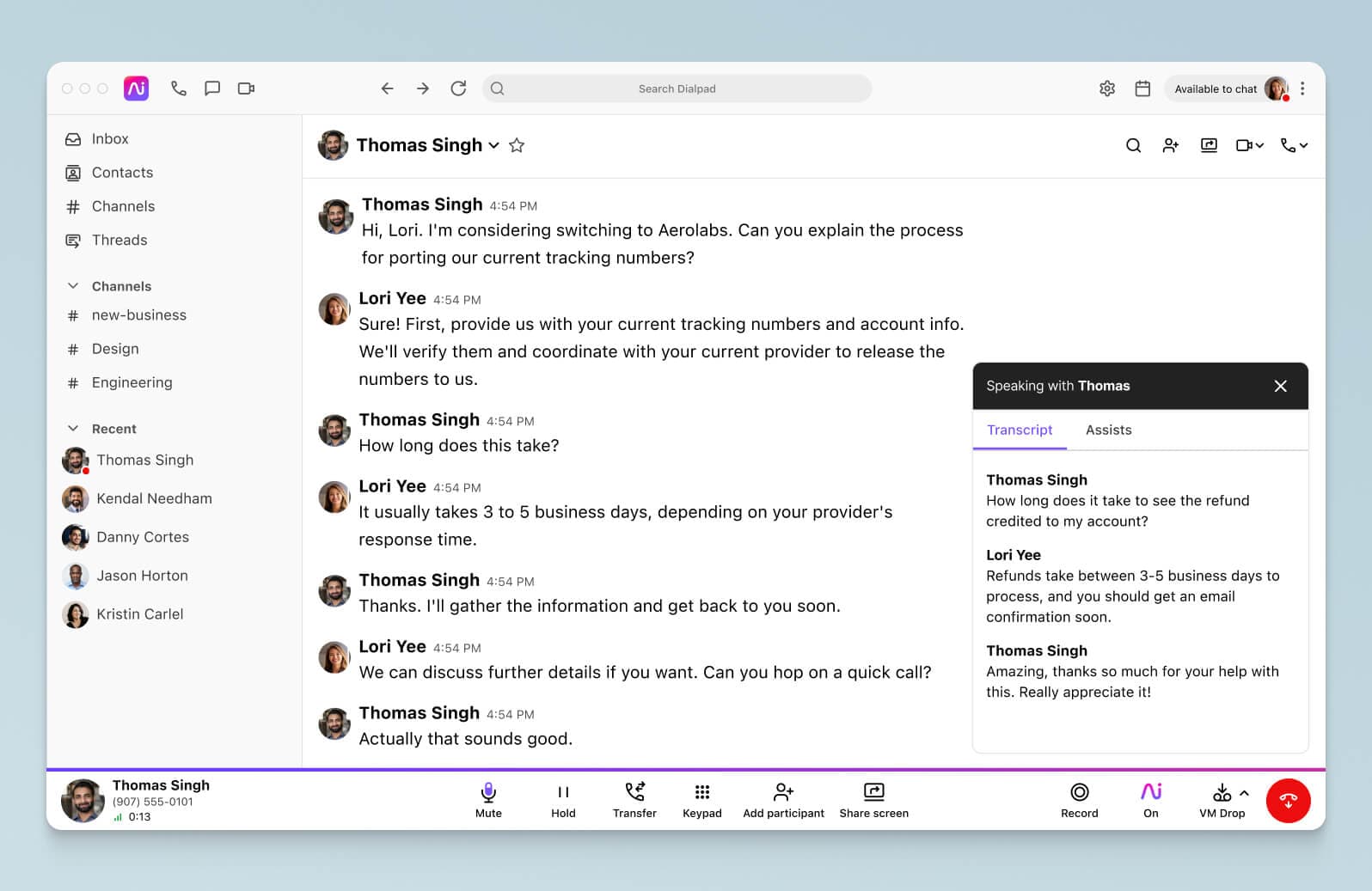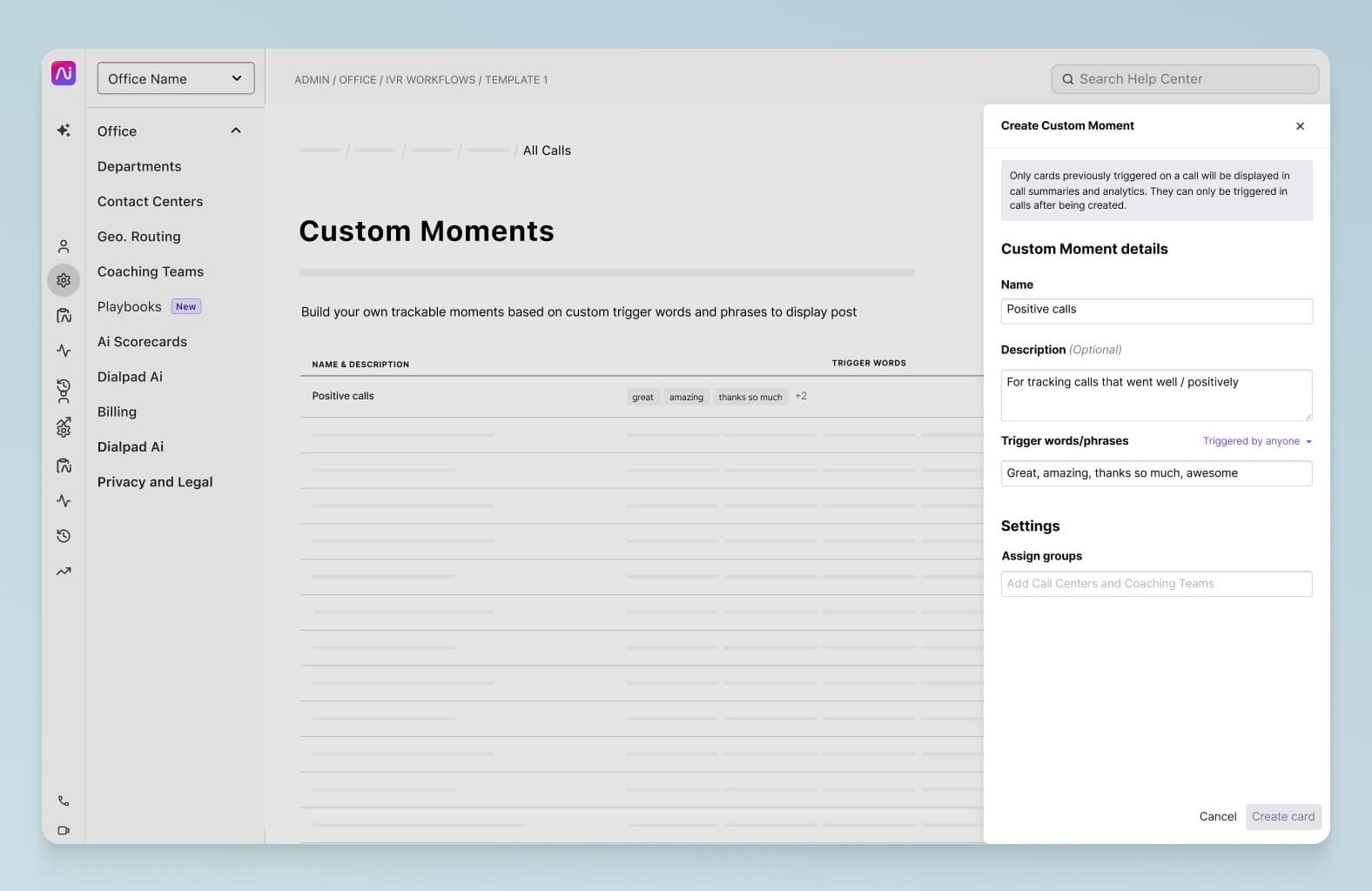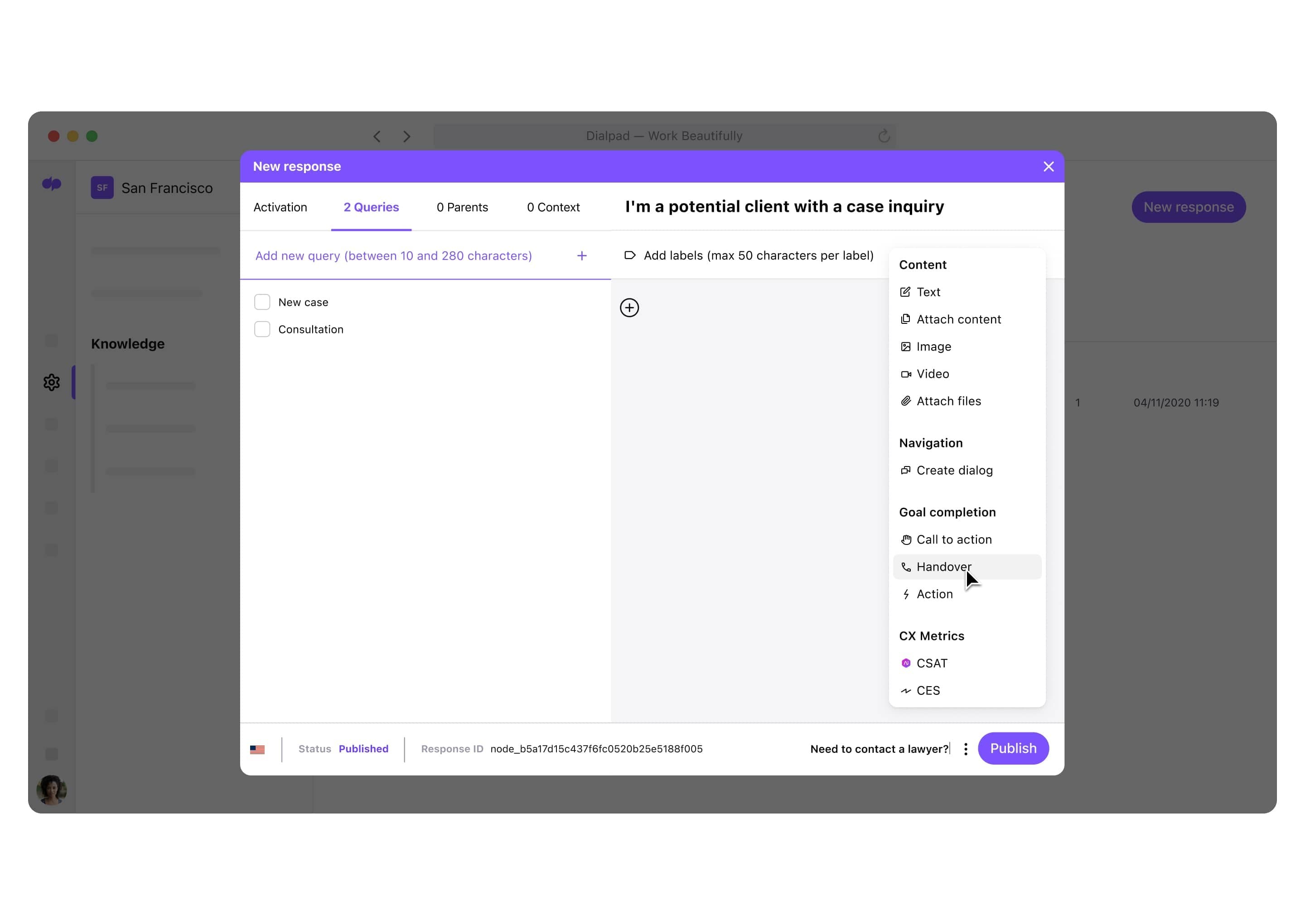The good things about AI (and the risks to get ahead of)

Tags
Share
Fun fact: The debate around artificial intelligence, or AI, has been raging for much longer than ChatGPT has been around.
From dystopian novels like Neuromancer and Ancillary Justice to movies like Her and well, A.I., the question of whether AI is ultimately good or bad for humanity has existed for as long as we’ve been able to imagine the potential of machines to surpass humans.
Today, we’re going to look at the optimistic side—the good things about AI—while still considering three key challenges that organizations and people are facing today when it comes to using AI in our everyday lives.
We’ll cover what AI is, how it’s already being used, and how you can get the most out of AI.
But first…
What do we mean by artificial intelligence (AI)?
Artificial intelligence, or AI, is the ability of a machine or computer to perform tasks associated with human intelligence.
“AI” is often used to refer to a variety of related concepts, from this field of study in general to an actual robot (e.g. calling a chatbot or virtual assistant like Siri as an AI).
AI has really been around since the 1950s, but only recently has it become a household name due to its growing presence in our everyday lives. (ChatGPT, anyone?)
Today, AI can be found in everything from self-driving cars to face-tuning filters in your favorite social media app. And while there are many different types of AI and use cases for generative AI, all of them share one common thread: they use data and algorithms to make decisions and solve problems much more quickly than humans.
At its core, AI is an umbrella term for any form of technology that uses data sets and algorithms to create models from which it can learn and make decisions. This means that instead of following pre-programmed rules or instructions, the machine “learns” how to do something by looking at patterns in large amounts of data. Because of this, these systems are able to replicate some aspects of human decision-making processes. (The plot of the movie Her is a great example of this in action.)
8 reasons why AI is good (when used responsibly)
AI is quickly becoming a staple with not just consumers, but businesses too.
The appeal of AI in the workplace spans almost every industry and business size, mainly because the potential benefits, like time savings, increased efficiency, and real-time customer insights are almost universally accessible through AI.
We’ll look at the inherent risks in the next section, but first, here’s a quick overview of why AI is good when used responsibly.
1. It helps you save time
AI can free up human resources by automating mundane tasks like data entry or basic customer service inquiries.
For example, Dialpad Ai can transcribe and even summarize calls and video meetings in real time:

What used to take a secretary or staff member time and effort in order to take detailed notes or meeting minutes can now be done by AI, which not only lets employees focus on the conversation itself and other valuable tasks, but also makes conversations more productive because action items and follow-up tasks are always clearly recorded.
From a customer service perspective, this kind of AI-assisted summarization and dispositioning of calls helps reduce after-call work for agents as well.
2. It makes data more useful
AI can also help businesses process large amounts of data much more quickly than ever before.
Almost all businesses possess an incredibly valuable—and basically free—source of data and insights: the conversations they’re having every day with prospects and customers.
But in most companies, this data is not useful at all because it simply takes too much time for managers or supervisors to manually sift through every call recording or messaging thread. Imagine a busy customer support manager who’s overseeing a large team of agents and coaching them through calls.
How much time can this person realistically have to listen back to call recordings from beginning to end?
AI that has built-in natural language processing (NLP) and natural language understanding (NLU) can analyze a lot of this data for companies—often, in seconds.
An example: say a credit union wants to see how frequently clients are asking about its retirement investing products. With Dialpad Ai Contact Center, the client manager could create a “Custom Moment” that tracks every time keywords such as “401k,” “retirement,” or “retiring” come up during client conversations:

They can then keep track of these trends in the analytics dashboard, and if they notice any anomalies or spikes in interest, then the investment team may decide to update their retirement planning products to reflect client demand. All without anyone having to listen to hundreds of hours of calls.
3. It can reduce human error
One of the biggest advantages of AI algorithms is that they’re able to identify patterns much faster than humans, making them better equipped to detect any errors in data sets or customer interactions.
This is especially true in demanding professions and industries where there are high stakes when mistakes are made, such as healthcare and emergency services. In this study, researchers looked at how AI could be used to help traffic controllers (think airports and waterways) reduce human error.
AI is of course not foolproof or right 100% of the time by any means—but in many cases, it can help catch what humans miss. As a co-pilot that augments human processes, AI can be very valuable.
4. It can speed up (and improve) decision-making
By being able to almost immediately analyze data from multiple sources, AI-powered systems can identify areas for improvement within a business’s operations (such as where there’s an opportunity for cost savings or increased efficiency) and provide actionable insights into how best to optimize those areas for maximum benefit.
Many contact center AI and workforce engagement solutions already do this, showing supervisors when call volumes tend to spike, predicting demand, and helping them decide how to staff agents more effectively throughout the day to optimize contact center operations.
5. It can always be on duty
Humans have to sleep. AI doesn’t. With customer service AI solutions like chatbots and conversational AI, companies can provide round-the-clock support for customers while still offering a personalized service experience—at scale.
These often aren’t difficult to implement either. With Dialpad Ai Contact Center, for example, you can easily use the drag-and-drop builder to create a conversational AI flow that handles different customer queries, which will help reduce call volumes for agents and shorten on-hold times:

📚 Further reading:
Learn more about natural language processing in customer service.
6. AI can operate in areas or situations too risky for humans
Maybe one of the fastest growing explorations when it comes to AI use cases is fighting literal fires.
Wildfires aren’t exactly a hospitable environment for researchers and scientists to go into and study. But with wildfires becoming more and more frequent—and severe—it’s crucial that we understand how to manage our forests and emergency responses.
AI would be able to help to predict the riskiest locations and the best possible strategy to mitigate fire hazards. For example, according to the World Economic Forum (which actually launched an AI program called FireAld to address the wildfire crisis), “sensors with inbuilt AI can collect acoustic information or operate as smoke detectors in forests and alert authorities within the first hour of a wildfire starting.”
If this initiative is successful, it could be the first step in showing the world how AI can be used for good beyond just reversing the global climate emergency.
7. It’s always improving and evolving
Another good thing about AI? It’s always learning. Thanks to machine learning algorithms, the more data AI ingests, the more accurate its outputs.
This is why well-built AI sales coaching and contact center solutions can provide real-time coaching for agents and data analysis that becomes more specific to the industry or business in which they’re used over time.
Did you know: One of the most unique things about Dialpad Ai is that not only has it processed over five billion minutes of voice and messaging data, this data set is also proprietary and specific to business conversations, which sets it apart from other LLMs (Large Language Models) trained on broad data sets.
8. It can help make more accurate predictions
With access to detailed historical performance data from various sources, financial and sales AI can help businesses predict and forecast more accurately—think revenue performance and supply chain analytics.
In fact, according to a McKinsey study, AI-enabled supply-chain management has enabled adopters to improve logistics costs by 15 percent, inventory levels by 35 percent, and service levels by 65 percent.
3 potential AI challenges to get ahead of
While the benefits of AI are definitely numerous, there are a few key challenges to keep in mind if you’re thinking about using AI at work.
Data privacy
The first challenge is data privacy. AI systems rely on being able to learn from data to function and make decisions. If the data collected by an AI system is not properly secured, it can leave your business—and customer—data vulnerable to attacks from hackers or malicious actors.
To avoid this, ensure you’re using a secure solution, whether it’s an AI transcription tool or AI call center platform, for storing and protecting collected data and that all users of the system are aware of the security measures in place.
Algorithmic bias
The second challenge is bias. Being designed and built by humans, AI systems inherently carry human bias within them.
McKinsey, PwC, MIT, and many more research firms have written extensively about AI and bias, and how this bias impacts predictions and outcomes, especially as it relates to race, gender, and other socio-economic factors.
For example, one commonly cited example is AI recruiting technology that perpetuates hiring bias instead of reducing it.
To mitigate this risk, choose good AI solutions that take these biases into consideration. It’s not possible to eliminate bias entirely at this point, and it may not ever be possible, but at the very least, businesses and organizations that are building AI solutions should be aware of, and actively addressing, these biases.
🔎 Case study:
See an example of how an AI company approaches risks of bias while building ethical AI.
Compliance
The third major challenge with AI is regulatory compliance. Many countries have laws regulating the use of AI systems due to their potential impact on personal privacy and safety concerns—and legislation will likely evolve considerably as governments and organizations learn more about AI.
To stay compliant with these regulations, make sure you understand relevant laws in your and your customers’ jurisdictions and ensure that any AI solutions you’re using will help you maintain compliance with those regulations.
What good things about AI have you seen?
Whether you’ve already tried using a virtual assistant like Siri or analyzing customer calls with AI, you might have already experienced a few good things that AI can do.
For businesses, the benefits of using AI are pretty far-reaching, provided they implement AI strategically and consider all the compliance and security questions before they dive in.
If you’re interested in using AI to empower your support or sales team, or just to help you do everyday tasks more efficiently, see how businesses across industries like healthcare, law, and finance are using Dialpad Ai to do exactly this!
Why is AI a good thing for businesses?
Book a personal walkthrough of Dialpad to find out, or check out The AI Compliance Guide for businesses!








